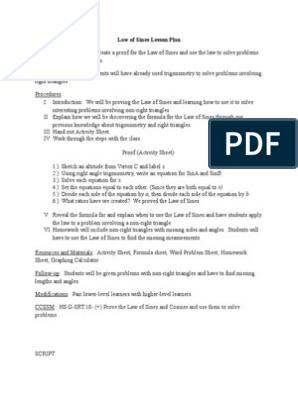0% found this document useful (0 votes)
232 views2 pagesTrigonometry: Circular Functions
The document discusses circular functions and their relationship to angles and coordinates on a unit circle. It defines the sine and cosine functions as the y-coordinate and x-coordinate of a point P on the unit circle, where P is determined by an angle in standard position. The tangent, cotangent, secant, and cosecant functions are also defined in relation to this point P. Examples are given to demonstrate evaluating these circular functions given the coordinates of P.
Uploaded by
Panizales, Anne Gella CatesCopyright
© © All Rights Reserved
We take content rights seriously. If you suspect this is your content, claim it here.
Available Formats
Download as PDF, TXT or read online on Scribd
0% found this document useful (0 votes)
232 views2 pagesTrigonometry: Circular Functions
The document discusses circular functions and their relationship to angles and coordinates on a unit circle. It defines the sine and cosine functions as the y-coordinate and x-coordinate of a point P on the unit circle, where P is determined by an angle in standard position. The tangent, cotangent, secant, and cosecant functions are also defined in relation to this point P. Examples are given to demonstrate evaluating these circular functions given the coordinates of P.
Uploaded by
Panizales, Anne Gella CatesCopyright
© © All Rights Reserved
We take content rights seriously. If you suspect this is your content, claim it here.
Available Formats
Download as PDF, TXT or read online on Scribd
/ 2






















































































